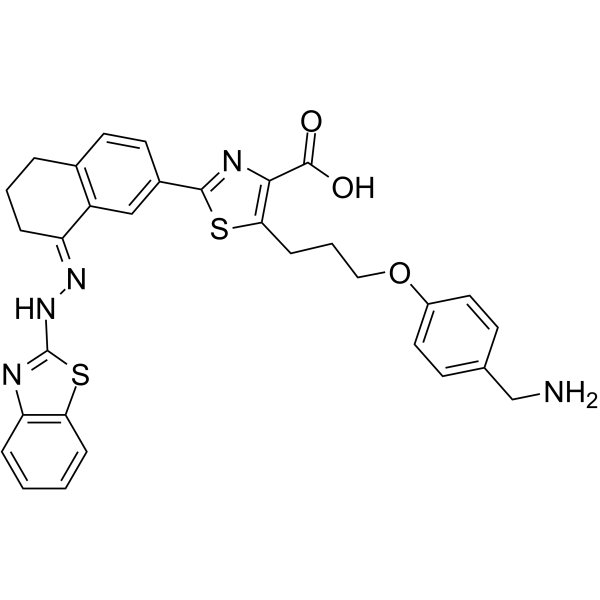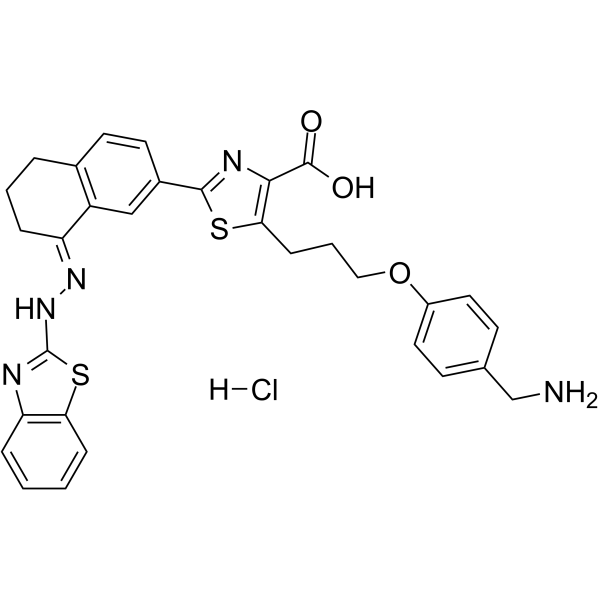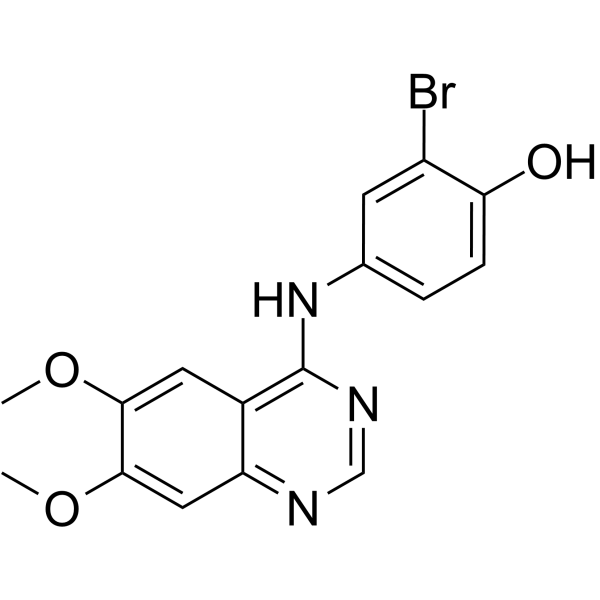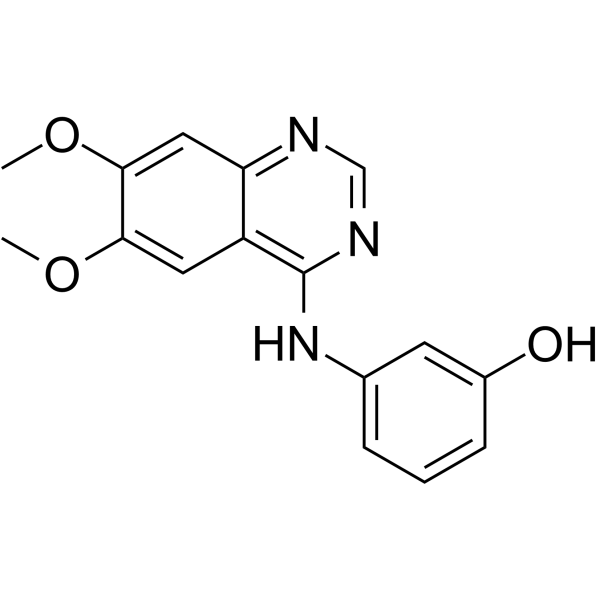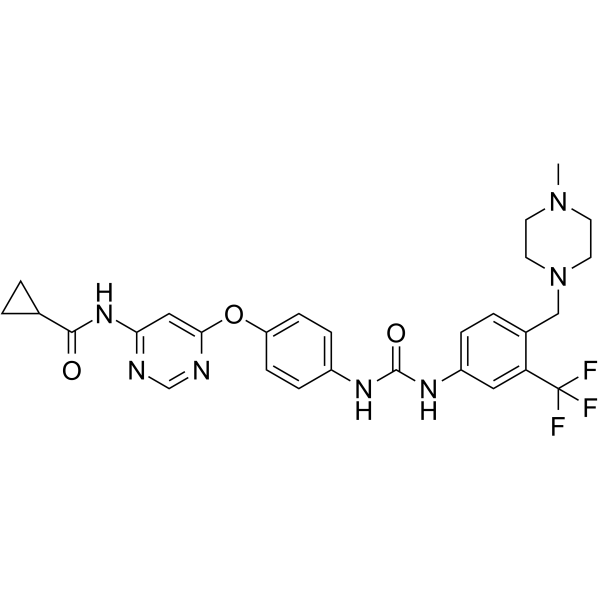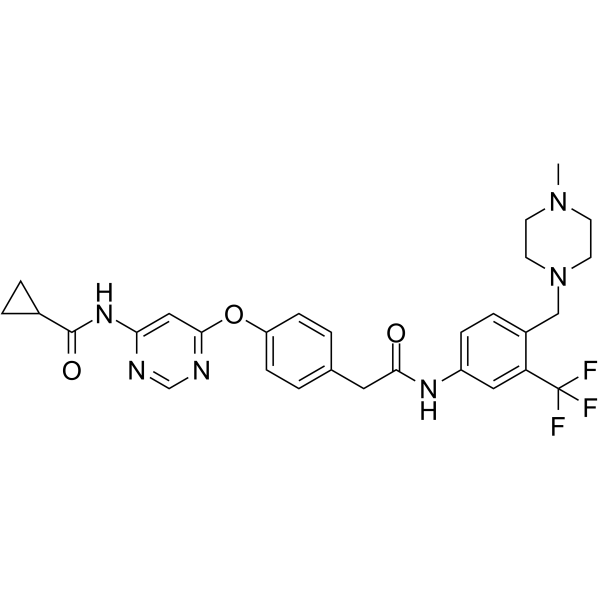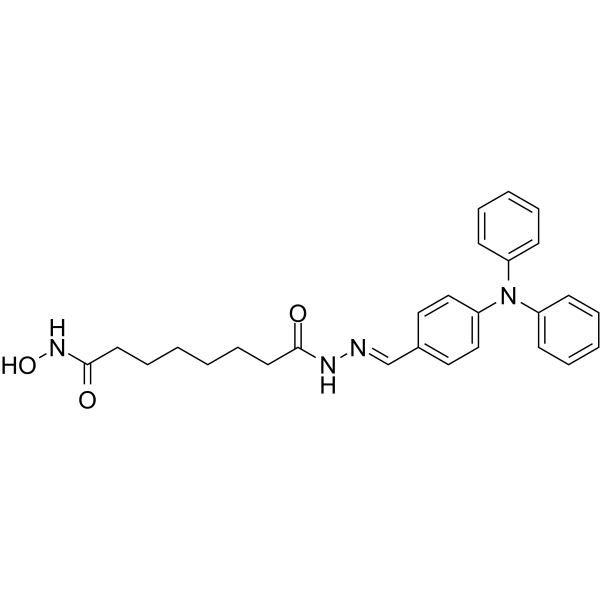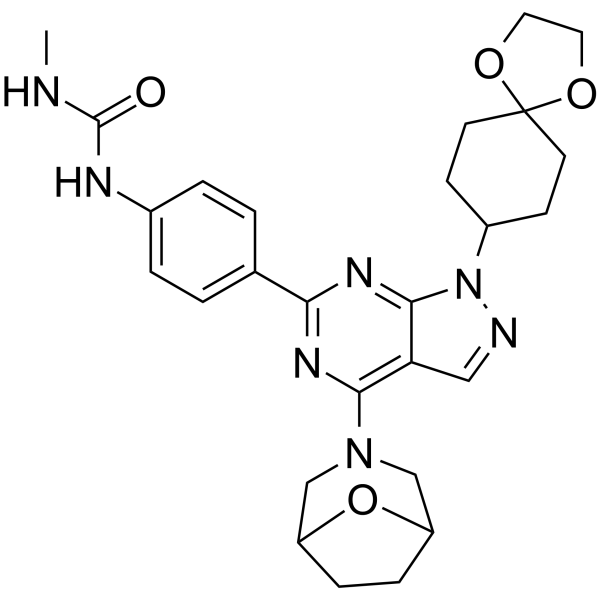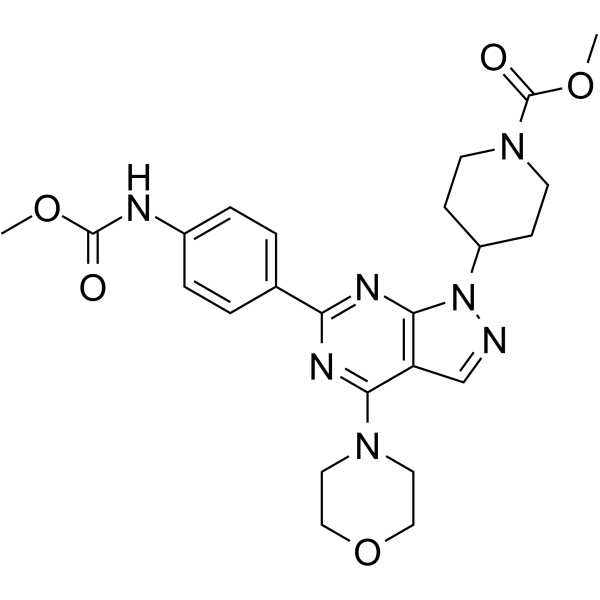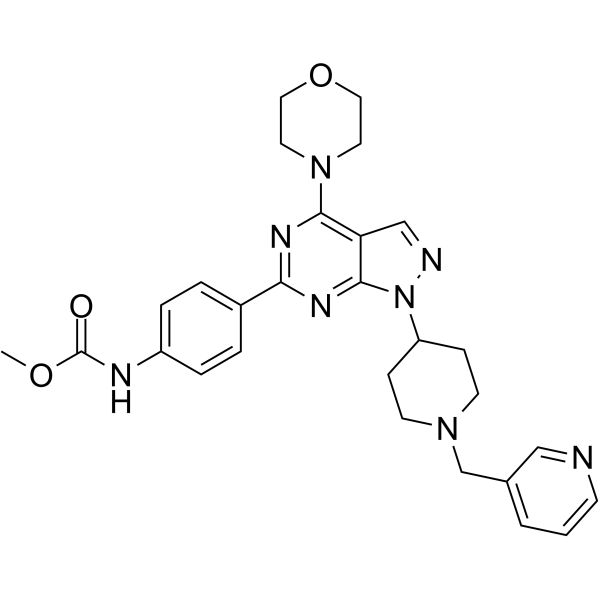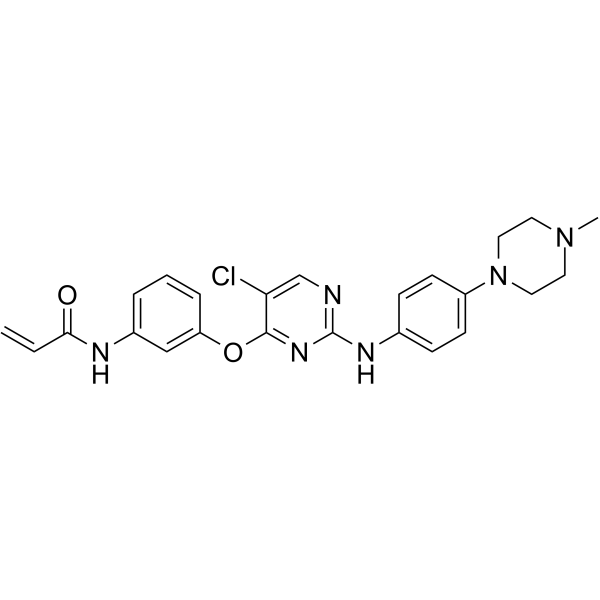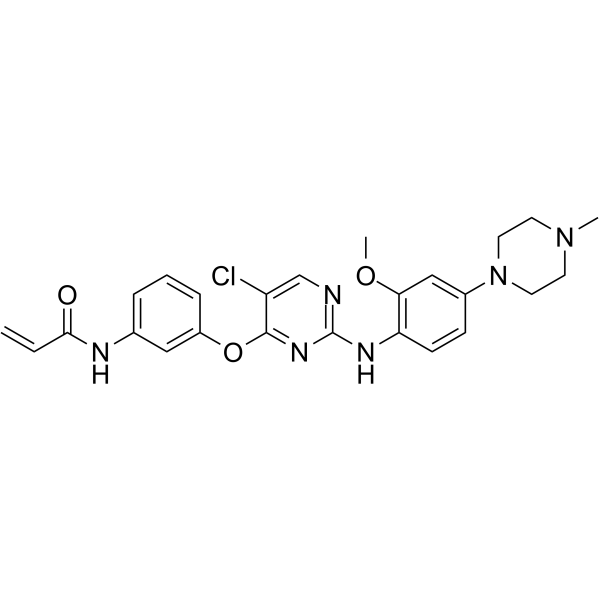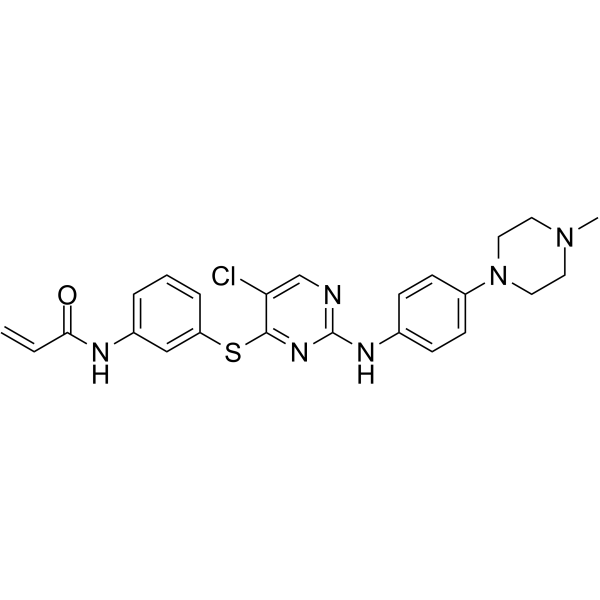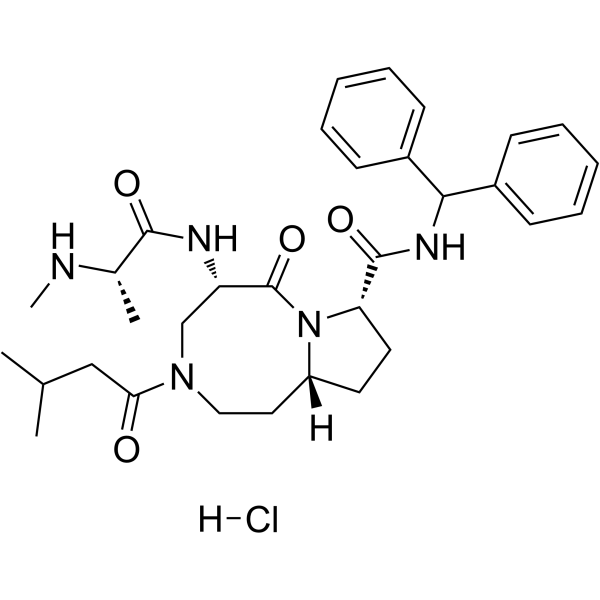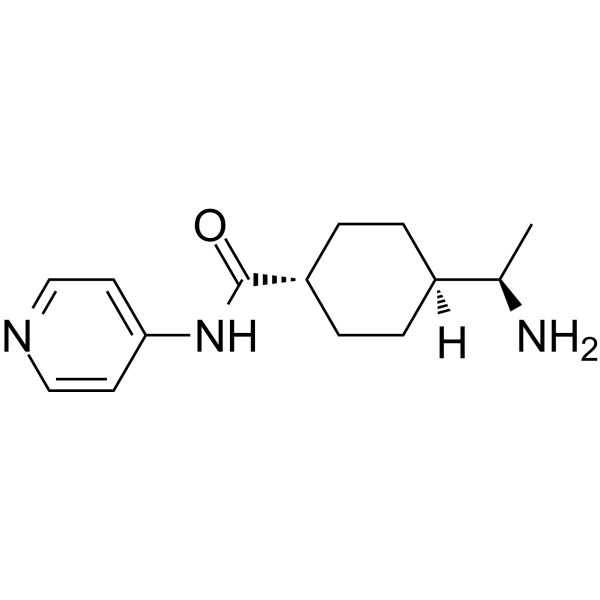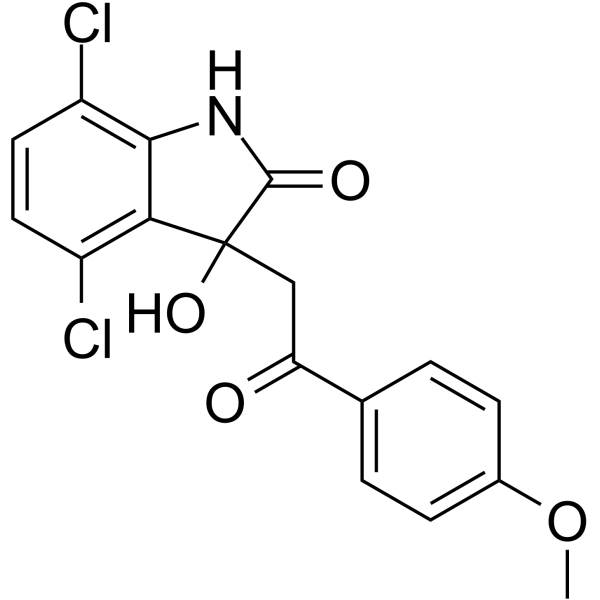|
BP10529
|
WEHI-539
|
|
|
|
|
WEHI-539 is a selective Bcl-XL inhibitor (IC50: 1.1 nM).
|
|
BP10960
|
WEHI-539 hydrochloride
|
|
|
|
|
WEHI-539 hydrochloride is a selective Bcl-XL inhibitor (IC50: 1.1 nM).
|
|
BP10997
|
WHI-P154
|
|
|
|
|
WHI-P154 is a potent JAK3 inhibitor.
|
|
BP10998
|
WHI-P180
|
|
|
|
|
WHI-P180 is a potent EGFR and Cdk2 inhibitors with IC50 of 4.0 and 1.0 uM, respectively.
|
|
BP10492
|
WS3
|
|
|
|
|
WS3, a β cell proliferation inducer, regulates Erb3 binding protein-1 (EBP1) and the IκB kinase pathway.
|
|
BP10493
|
WS6
|
|
|
|
|
WS6, a β cell proliferation inducer, regulates Erb3 binding protein-1 (EBP1) and the IκB kinase pathway.
|
|
BP10233
|
WT-161
|
|
|
|
|
WT161 is a potent and selective inhibitor of HDAC6 (IC50:0.40 nM).
|
|
BP10172
|
WYE-132
|
|
|
|
|
WYE-125132 (WYE-132) is a highly potent, ATP-competitive mTOR inhibitor with IC50 of 0.19 nM; highly selective for mTOR versus PI3Ks or PI3K-related kinases hSMG1 and ATR.
|
|
BP10098
|
WYE-354
|
|
|
|
|
WYE-354(IC50=5 nM) is an effective, selective and ATP-competitive mTOR inhibitor. It blocks mTORC2/P-AKT(S473) and mTORC1/P-S6K(T389), not P-AKT(T308). The selectivity for mTOR is higher than PI3Kα (>100-fold) and PI3Kγ (>500-fold).
|
|
BP10097
|
WYE-687
|
|
|
|
|
WYE-687 is an ATP-competitive and selective inhibitor of mTOR with IC50 of 7 nM; blocks mTORC1/pS6K(T389) and mTORC2/P-AKT(S473) but no effect observed on P-AKT(T308). Selectivity for mTOR is greater than PI3Kα (>100-fold) and PI3Kγ (>500-fold).
|
|
BP10239
|
WZ-3146
|
|
|
|
|
WZ3146 is a mutant-selective irreversible inhibitor of EGFR(L858R) and EGFR(E746_A750) with IC50 of 2 nM and 2 nM; does not inhibit ERBB2 phosphorylation (T798I).
|
|
BP10238
|
WZ4002
|
|
|
|
|
WZ4002 is a mutant-selective EGFR inhibitor for EGFR(L858R) and EGFR(T790M) with IC50 of 2 nM/8 nM.
|
|
BP10240
|
WZ8040
|
|
|
|
|
WZ8040 is a novel mutant-selective irreversible EGFRT790M inhibitor, does not inhibit ERBB2 phosphorylation (T798I).
|
|
BP10423
|
X-376
|
|
|
|
|
Ensartinib (X-396) is an orally available small molecule inhibitor of the receptor tyrosine kinase anaplastic lymphoma kinase (ALK) with potential antineoplastic activity. Upon oral administration, X-396 binds to and inhibits ALK kinase, ALK fusion proteins, and ALK point mutation variants. Inhibition of ALK leads to the disruption of ALK-mediated signaling and eventually inhibits tumor cell growth in ALK-expressing tumor cells. ALK belongs to the insulin receptor superfamily and plays an important role in nervous system development.
|
|
BP10104
|
Xevinapant
|
|
|
|
|
AT406 (SM-406, ARRY-334543) is a potent Smac mimetic and an antagonist of IAP (inhibitor of apoptosis protein via E3 ubiquitin ligase), binding to XIAP-BIR3, cIAP1-BIR3 and cIAP2-BIR3 with Ki of 66.4 nM, 1.9 nM, and 5.1 nM, 50- to 100-fold higher affinities than the Smac AVPI peptide. Phase 1.
|
|
BP10103
|
Xevinapant hydrochloride
|
|
|
|
|
AT-406, an orally active antagonist of multiple inhibitor of apoptosis proteins(IAP), inhibits progression of human ovarian Y binding to XIAP-BIR3, cIAP1-BIR3 and cIAP2-BIR3 with Ki of 66.4 nM, 1.9 nM, and 5.1 nM, 50- to 100-fold higher affinities than the Smac AVPI peptide.
|
|
BP10577
|
Y-27632
|
|
|
|
|
Y-27632 is a selective ATP-competitive inhibitor of ROCK-I and ROCK-II.
|
|
BP10347
|
Y-27632 dihydrochloride
|
|
|
|
|
Y-27632 is a selective inhibitor of ROCKs including p160ROCK (Ki: 140 nM) and ROCK2 (IC50: 800 nM).
|
|
BP10437
|
YH-306
|
|
|
|
|
YH-306 is a modulator of the FAK signaling pathway that acts by suppressing colorectal tumor growth and metastasis.
|
|
BP10062
|
YK-4-279
|
|
|
|
|
YK 4-279, an inhibitor of RNA Helicase A (RHA), binds to the oncogenic transciption factor EWS-FLI1.
|
